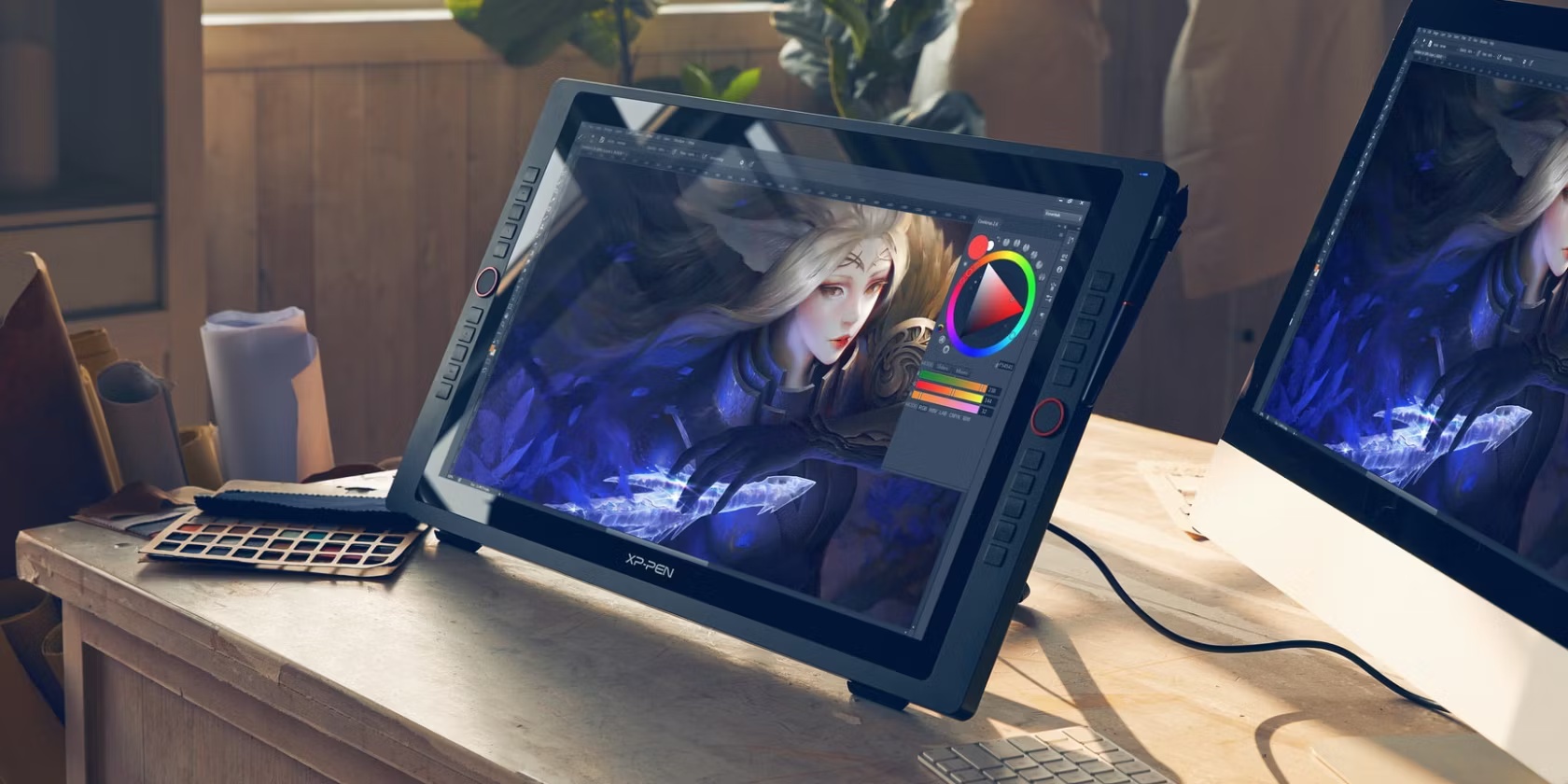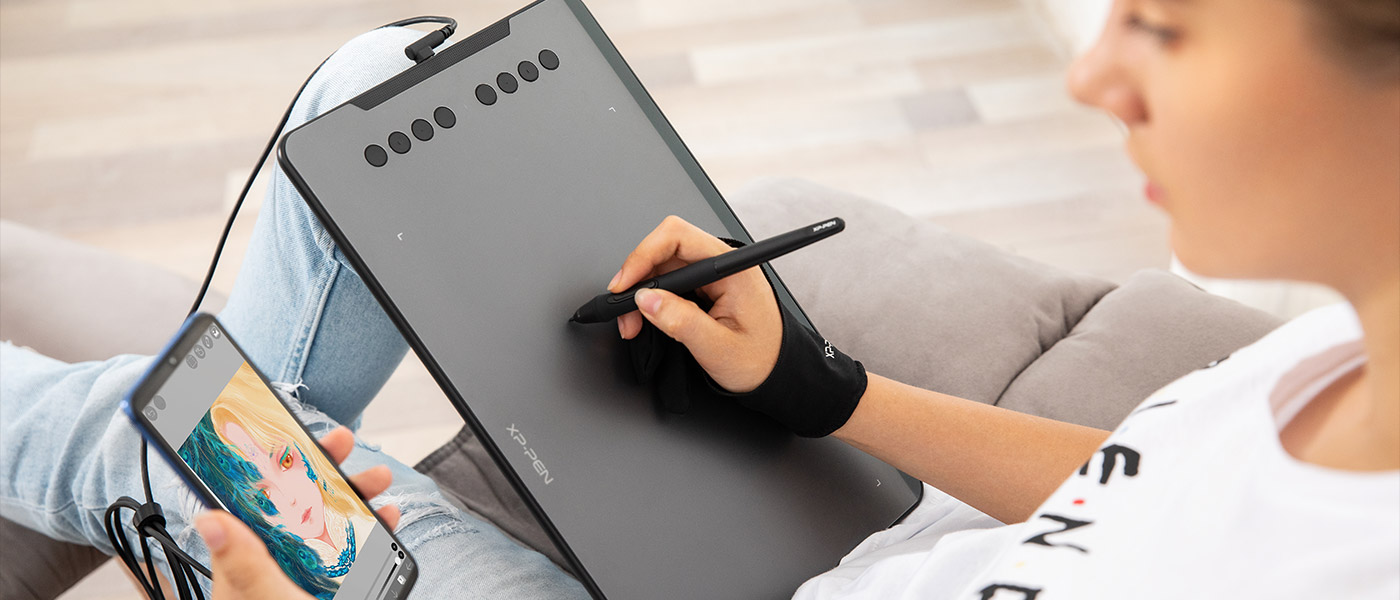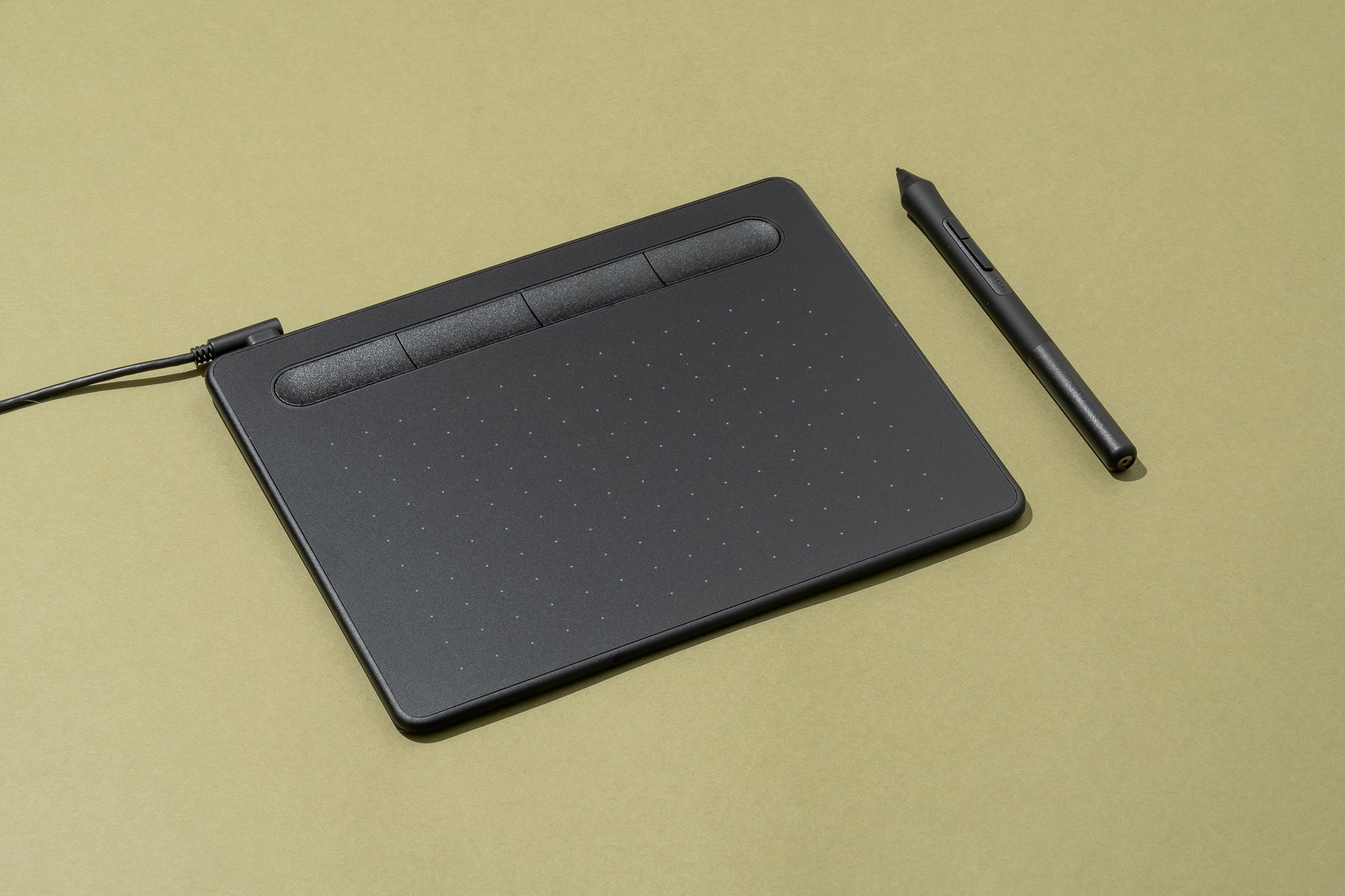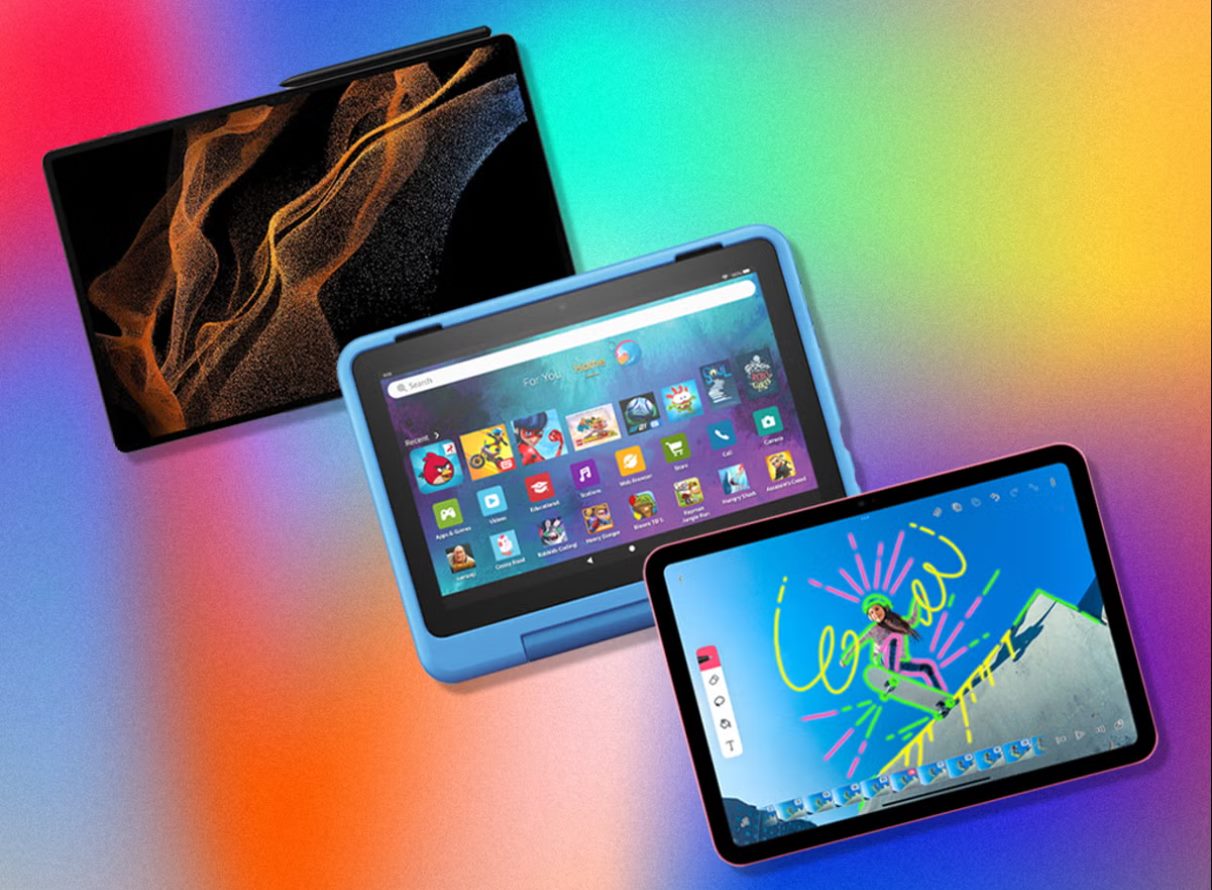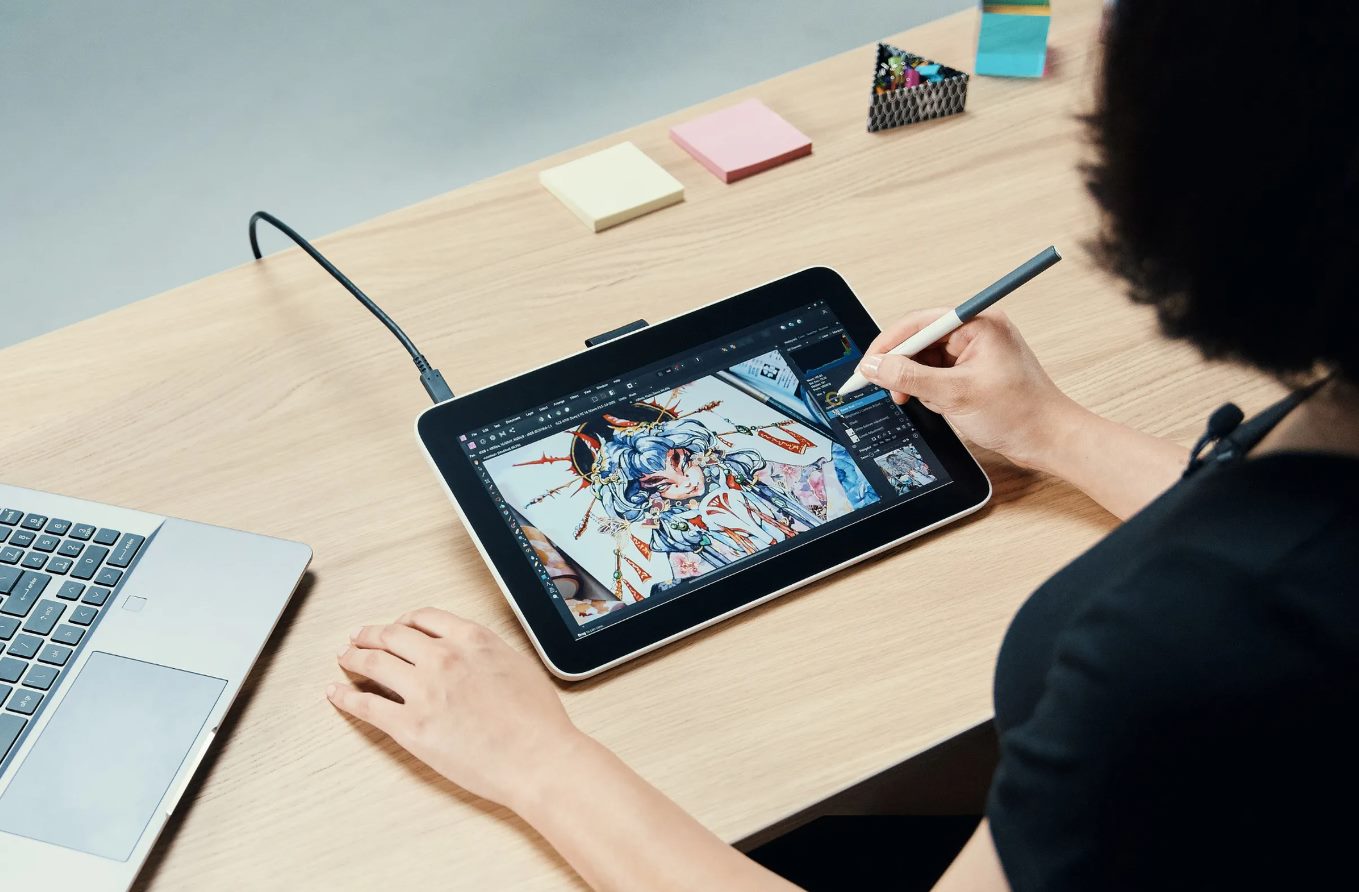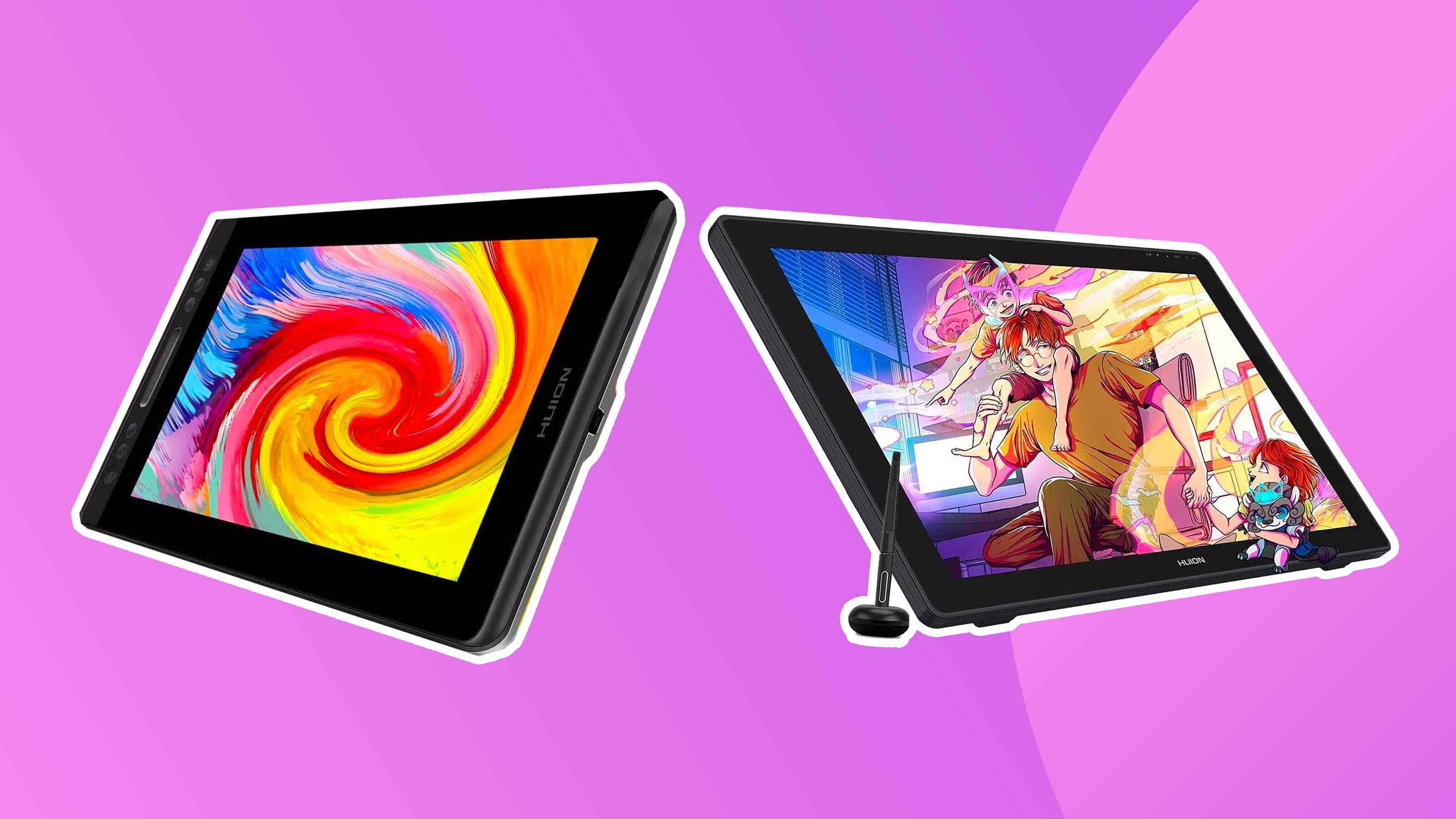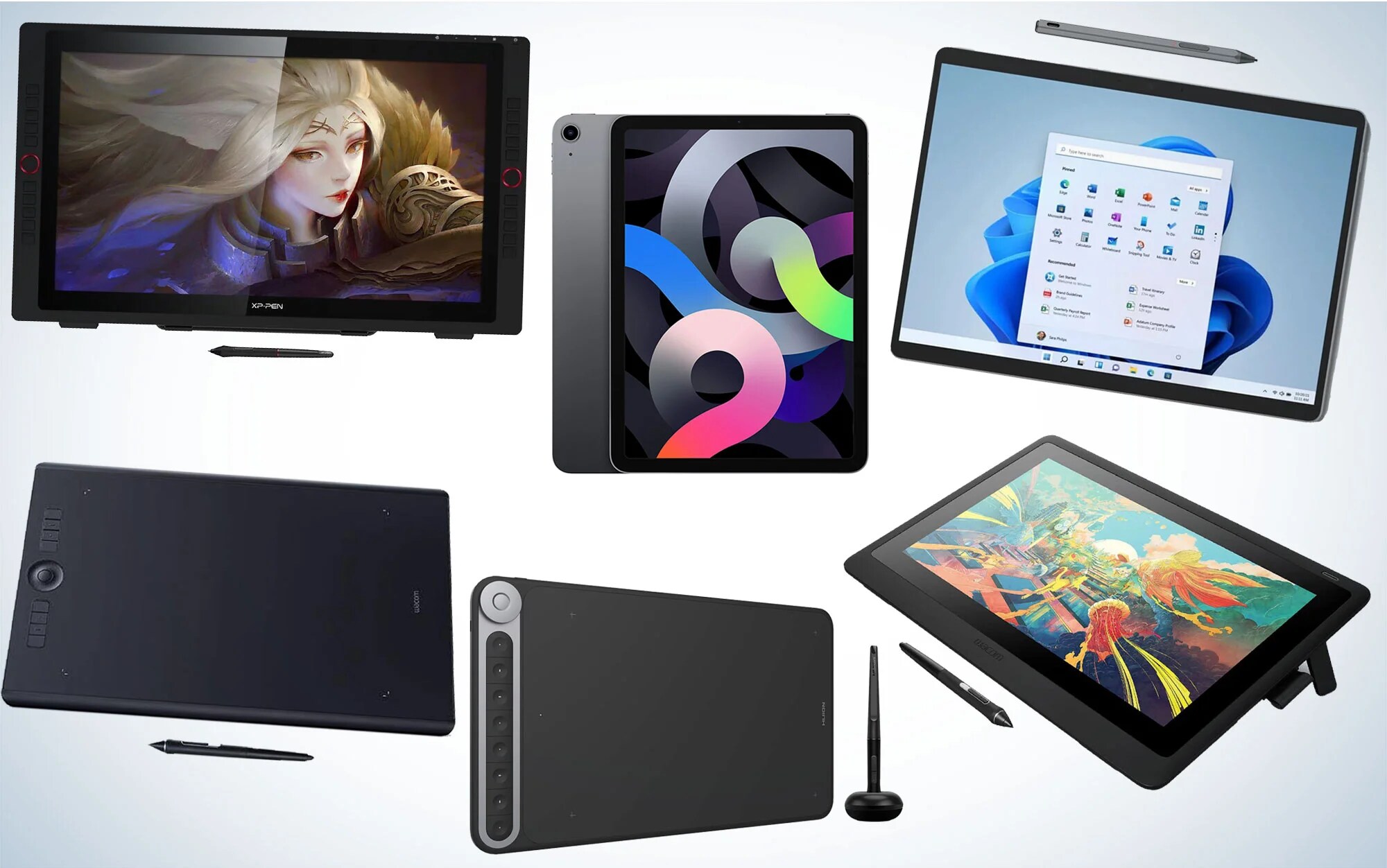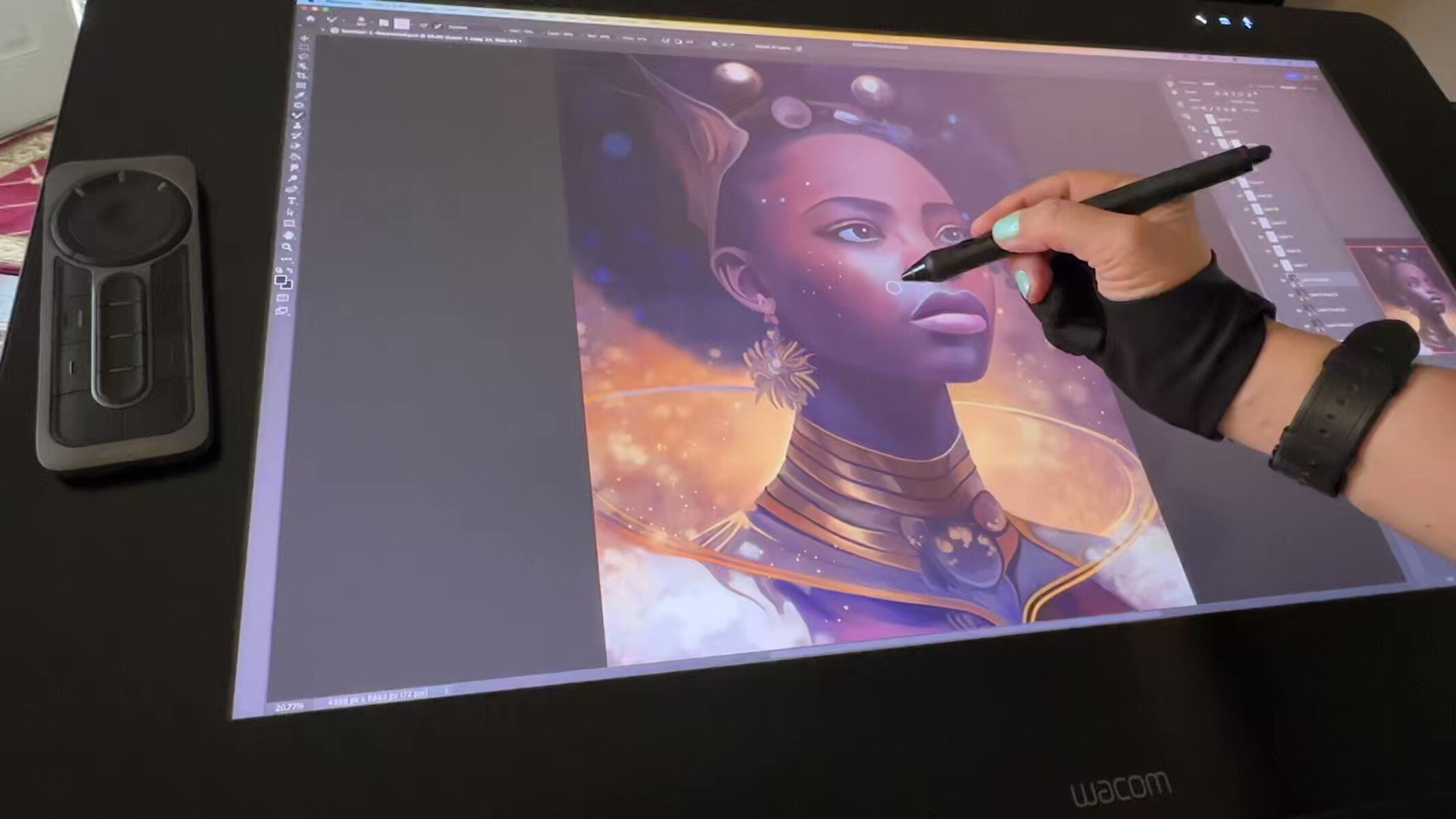Benefits of Using a Drawing Tablet
A drawing tablet, also known as a graphics tablet or pen tablet, is a digital device that allows artists, designers, and creatives to create digital artwork. While traditional drawing tools, such as pencils and brushes, have their charm, drawing tablets offer numerous benefits that make them a popular choice among artists of all skill levels. Here are some of the key advantages of using a drawing tablet:
- Enhanced Precision and Control: Drawing tablets offer precise tracking and pen pressure sensitivity, allowing artists to have fine control over their strokes. This level of precision is especially beneficial for tasks that require delicate lines or precise detailing.
- Efficient Workflow: Drawing tablets streamline the artistic process by eliminating the need for scanning or digitizing hand-drawn artwork. Artists can directly create digital art on the tablet, which can be easily edited, shared, or printed. This saves significant time and effort, enhancing the overall workflow.
- Endless Creative Possibilities: Drawing tablets provide a vast array of digital tools, brushes, and effects that traditional mediums cannot replicate. Artists can experiment with different textures, colors, and styles, opening up a world of creative possibilities.
- Mistake-Friendly Environment: Unlike traditional drawing tools, drawing tablets offer the ability to easily undo or redo strokes, which can be invaluable when working on complex or time-consuming artwork. This feature allows artists to freely explore and experiment without the fear of irreversible mistakes.
- Customization: Most drawing tablets come with programmable buttons and customizable settings, allowing artists to personalize their workflow according to their preferences. This flexibility enhances efficiency and comfort, enabling artists to work in a way that feels natural and intuitive.
- Portability: Drawing tablets are compact and lightweight, making them easy to carry around for artists on the go. Whether working in a studio or traveling, artists can have their creative tools with them at all times, enabling them to capture inspiration wherever they are.
Overall, drawing tablets offer a range of benefits that enhance the artistic experience and open up new possibilities for creative expression. With their precision, efficiency, and versatility, these digital devices have become an essential tool for artists looking to explore the world of digital art.
Drawing Tablet vs Traditional Drawing Tools
When it comes to creating art, artists have long relied on traditional drawing tools, such as pencils, brushes, and paper. However, with advancements in technology, drawing tablets have emerged as a popular alternative. Let’s explore the key differences between drawing tablets and traditional drawing tools:
- Physical vs. Digital: Traditional drawing tools involve physical materials, where artists create art by applying ink, graphite, or paint directly onto surfaces like paper or canvas. On the other hand, drawing tablets provide a digital canvas, allowing artists to create art using a stylus or pen on a tablet’s surface.
- Sensation and Texture: Traditional drawing tools offer a tactile experience, with artists feeling the texture of the paper or canvas and the resistance of the medium. This physical connection can be a crucial aspect for some artists, as it adds to the overall sensory experience of creating art. Drawing tablets, although they do not provide the same texture, offer the advantage of replicating various brush types and textures digitally.
- Undo and Layering: One significant advantage that drawing tablets have over traditional tools is the ability to easily undo strokes and work with layers. Mistakes made while using traditional tools are often permanent and require starting over, whereas drawing tablets allow artists to undo and redo their work with a simple command. Layering, a feature exclusive to digital art, enables artists to work on different elements separately and make adjustments without affecting the entire composition.
- Workflow and Editing: Traditional drawing often requires additional steps, such as scanning or photographing the artwork, to digitize it for editing or sharing purposes. Drawing tablets eliminate this need by providing a direct digital canvas that can be easily edited, saved, and shared. This streamlines the artistic process and saves time and effort for artists.
- Cost Considerations: Traditional drawing tools may have a lower upfront cost compared to drawing tablets, especially for beginners. However, the cost of purchasing paper, brushes, paints, and other materials can add up over time. Drawing tablets, although they require an initial investment, eliminate the need for constant material replenishment.
Choosing between traditional drawing tools and a drawing tablet ultimately depends on an artist’s preferences, style, and artistic goals. While traditional tools offer a more tactile experience and a deep connection with physical materials, drawing tablets provide numerous advantages in terms of digital capabilities, convenience, and flexibility.
How to Choose the Right Drawing Tablet for You
With the wide variety of drawing tablets available in the market, choosing the right one can feel overwhelming. However, by considering a few key factors, you can find a tablet that suits your artistic needs and preferences. Here are some things to consider when choosing a drawing tablet:
- Budget: Determine your budget range beforehand, as drawing tablets can vary greatly in price. Set a budget that aligns with your financial resources and prioritize features that are most important to you.
- Size and Portability: Consider the size and portability of the drawing tablet. Larger tablets offer more drawing space, but they may be less convenient to carry around. Smaller tablets, on the other hand, are more portable, making them suitable for artists who work on the go.
- Display: Decide whether you want a tablet with an integrated display or one that connects to a separate computer monitor. Tablets with built-in displays allow for a direct drawing experience, while non-display tablets require you to look at the computer screen while drawing on the tablet’s surface. Integrated displays generally come at a higher price point.
- Pressure Sensitivity: Check the tablet’s pressure sensitivity levels. Pressure sensitivity determines how responsive the tablet is to the variations in pressure applied to the stylus. Higher sensitivity levels provide greater control over the thickness and opacity of your strokes.
- Compatibility: Ensure that the drawing tablet is compatible with your preferred operating system, be it Windows, macOS, or others. Additionally, check if it is compatible with the software you intend to use for digital art creation.
- Additional Features: Consider any additional features that may enhance your drawing experience. These could include customizable buttons, shortcut keys, touch controls, tilt recognition, wireless connectivity, and ergonomically designed pen holders. These features can improve efficiency and comfort while working.
- Read Reviews: Research and read reviews from other artists who have used the drawing tablets you are considering. Take note of their experiences, pros and cons, and whether the tablets meet their expectations.
- Try Before You Buy: If possible, try out different drawing tablets before making a purchase. This will allow you to get a feel for the tablet’s responsiveness, ergonomics, and overall user experience. Some local art supply stores or electronics retailers may have display models available for testing.
By considering these factors and conducting thorough research, you can make an informed decision and choose a drawing tablet that aligns with your artistic goals and preferences. Remember that every artist is unique, so the right drawing tablet for you will ultimately depend on your individual needs and preferences.
Popular Drawing Tablet Brands
When it comes to choosing a drawing tablet, there are several reputable brands that offer high-quality devices designed specifically for digital art. These brands have earned a strong reputation for their reliability, performance, and innovative features. Here are some of the most popular drawing tablet brands:
- Wacom: Wacom is a household name in the drawing tablet industry. They offer a wide range of tablets for every skill level, from entry-level to professional-grade devices. Wacom tablets are known for their exceptional pen sensitivity, accuracy, and durable build quality.
- Huion: Huion has gained a strong following among digital artists, thanks to its affordable yet feature-rich tablets. Huion tablets offer excellent pressure sensitivity, customizable express keys, and a wide range of models to suit different budgets and preferences.
- XP-Pen: XP-Pen has made a name for itself by providing high-quality drawing tablets at competitive prices. Their tablets boast impressive pressure sensitivity, ergonomic designs, and innovative features such as tilt recognition and battery-free stylus technology.
- Apple: Known for their sleek design and user-friendly interfaces, Apple’s iPad Pro and iPad Air, paired with the Apple Pencil, have become popular choices among digital artists. These tablets offer excellent display quality, Apple’s powerful hardware, and a wide range of drawing apps available on the App Store.
- Microsoft: Microsoft’s Surface Pro lineup, in combination with the Surface Pen, offers a versatile drawing experience. These tablets feature high-resolution displays, powerful processors, and the flexibility to switch between tablet and laptop modes. The Surface Pen provides precise and responsive drawing capabilities.
- Samsung: Samsung’s Galaxy Tab S lineup has gained recognition among digital artists for their excellent display quality and pen responsiveness. With features like a Super AMOLED display, the S Pen, and powerful hardware, Samsung tablets provide an immersive drawing experience.
- Lenovo: Lenovo offers a variety of drawing tablets, such as the Yoga Book and Lenovo ThinkPad X1 Tablet, which cater to artists’ needs. These tablets feature high-resolution displays, pen support, and versatile form factors for on-the-go creativity.
These are just a few of the many popular drawing tablet brands available in the market. Each brand offers unique features and specifications, so it’s essential to research and consider your specific requirements before making a purchase. Reading customer reviews and seeking recommendations from fellow artists can also help you in the decision-making process.
Common Uses of Drawing Tablets
Drawing tablets have revolutionized the way art is created, offering a wide range of applications and versatility. While their primary purpose is digital art creation, drawing tablets serve various other functions across different industries. Here are some common uses of drawing tablets:
- Digital Art and Illustration: Drawing tablets are widely used by digital artists and illustrators to create stunning digital artwork. The tablets provide a realistic drawing experience with their pressure sensitivity and pen accuracy, allowing artists to create detailed and expressive illustrations.
- Photo Editing and Retouching: Drawing tablets are invaluable tools for photographers and graphic designers during the photo editing process. The precise control and accuracy of the pen make it easy to retouch photos, remove imperfections, apply advanced editing techniques, and create complex compositions.
- Animation and 3D Modeling: Drawing tablets are extensively used in animation and 3D modeling workflows. Artists can use the tablets to sketch storyboards, create character designs, sculpt digital models, and add intricate details to animations or 3D scenes.
- Graphic Design and Typography: Drawing tablets play a crucial role in graphic design and typography, enabling designers to create logos, icons, illustrations, and custom lettering. The tablets’ precision and pressure sensitivity allow for precise control over lines, shapes, and typography, resulting in visually appealing and professional designs.
- Architectural and Industrial Design: Drawing tablets are utilized by architects and industrial designers to sketch and visualize their concepts. With digital drawing tablets, designers can create detailed architectural drawings, renderings, and product designs with ease and efficiency.
- Digital Note-Taking and Annotation: Drawing tablets can be used as digital notepads, allowing users to take handwritten notes, sketch diagrams, and annotate documents. This is particularly useful for educators, professionals, and students who want to digitize their note-taking or collaborate on shared documents.
- Art Therapy and Rehabilitation: Drawing tablets have found applications in art therapy and rehabilitation programs. The intuitive nature of the tablets and their ability to erase mistakes easily provide a supportive environment for individuals to express themselves creatively and engage in therapeutic activities.
- Teaching and E-Learning: Drawing tablets are valuable tools for teachers and online educators, as they can facilitate real-time digital drawings, demonstrations, and interactive lessons. This enhances the learning experience and engages students in a visual and interactive way.
These are just a few examples of the many ways drawing tablets are used across various industries. As technology evolves, the possibilities for utilizing drawing tablets in creative and practical contexts continue to expand, making them a versatile tool for artists, designers, educators, and professionals alike.
Drawing Tablet Accessories to Enhance Your Digital Art
While drawing tablets alone provide an excellent platform for digital art creation, there are several accessories available that can enhance your artistic experience and take your digital artwork to the next level. These accessories complement the functionality of drawing tablets and offer added convenience, customization, and creativity. Here are some popular drawing tablet accessories:
- Stylus Pens: Stylus pens are essential accessories for drawing tablets. They come in various styles and offer different levels of pressure sensitivity, grip comfort, and customization options. Investing in a high-quality stylus pen can significantly improve your drawing precision and control.
- Pen Nibs: Pen nibs are replaceable tips for stylus pens. Different nibs offer varied textures, such as felt-like or smooth surfaces, replicating the feel of different traditional drawing tools. Having a range of pen nibs allows you to experiment with different drawing techniques and achieve a variety of effects.
- Glove or Hand Support: For artists who prefer resting their hand on the tablet surface while drawing, a glove or hand support can be beneficial. These accessories reduce friction, provide comfort, and prevent smudging or unintended touch inputs from the hand while drawing.
- Screen Protectors: Applying a screen protector can protect the drawing surface of your tablet from scratches, smudges, and fingerprints. Anti-glare or matte screen protectors can also reduce glare and offer a paper-like texture, providing a more traditional drawing experience.
- Tablet Stand: A tablet stand or holder is useful for maintaining an ergonomic drawing position. It helps alleviate strain on the neck and back by providing an adjustable and stable platform for your drawing tablet, allowing you to work comfortably for extended periods.
- External Drawing Monitor: If you use a non-display drawing tablet, connecting it to an external drawing monitor can enhance your workflow and provide a more natural drawing experience. These monitors offer high-resolution displays, color accuracy, and wide viewing angles for a more immersive creative process.
- Drawing Gloves: Drawing gloves are particularly useful for digital artists who want to reduce friction and maintain a smooth drawing motion. They cover the parts of your hand that come into contact with the tablet surface, preventing any unintended marks or smudges on the screen.
- Customizable Shortcut Keyboards: Customizable shortcut keyboards or keypads offer additional programmable buttons that can be assigned to frequently used functions and shortcuts. These keyboards can significantly speed up your workflow by reducing the need to navigate menus or use on-screen controls.
These are just a few examples of the many accessories available for drawing tablets. The right accessories for you will depend on your individual preferences, workflow, and the type of art you create. Experimenting with different accessories can help you discover new ways to enhance your digital art and make your artistic process more enjoyable and efficient.







